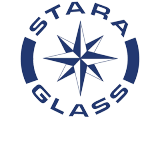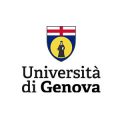
About the project
The novelty of this application in glass production is that the heat for the Steam-Methane Reforming (SMR) reaction will not be generated on purpose by direct fuel combustion, but will be recovered from waste gases that otherwise would be lost into the atmosphere.
The LIFE SUGAR project will operate interventions in glass industry capable of reducing energy consumption and CO2 emissions by recovering the residual heat from exhaust flue gases from the combustion of fossil fuels to produce thermal energy, by means of an additional thermal and chemical vector (in addition to the combustion air) represented by the hydrogen-rich syngas produced by an endothermic SMR reaction.
Thus, it will explore the use of hydrogen-based combustion in the glass sector to pave the way to carbon-free industry.
The LIFE SUGAR system uses the heat recovery architecture of SG Centauro system, (the only known system coupling SNCR technology and regenerative performance), which is divided in a high temperature regenerative and a low temperature recuperative part.
This architecture allows to derive a stream of waste gas between the two heat recovery sub-systems at a temperature suitable for providing heat for reforming reaction.
This way, a part of the NG to be used as fuel in the furnace is ‘reformed’ with steam to obtain a H2/CO rich syngas, with a higher energy content.
This solution allows to re-use high quantities of thermal energy in the combustion chamber, guaranteeing the melting system an efficiency closer to the theoretical thermodynamic limits.
The coordinated action of these two systems:
1. preheats combustion air by recovering from waste gases the maximum amount of heat that air is thermodynamically capable of storing;
2. preheats a fraction of natural gas and promotes endothermic steam-methane reforming reactions, with formation of high energy molecules such as H2 and CO, to be burned inside the melting chamber.
Preliminary research
showed that up to 1/3 of the natural gas used as fuel for the melting furnace can undergo reforming at the expense of residual heat of waste gases, while at the same time guaranteeing combustion air preheating efficiencies at regenerative levels (1250 – 1300°C), thus yielding melting energy consumption reductions of the order of 10 – 15%.
The additional heat exchange between waste gas and natural gas in the steam reforming process is expected to fully recover all exploitable waste gas energy.
LIFE SUGAR will design a system prototype and demonstrate it at a 1:5 scale in the operational environment of a real hollow glass end-port furnace. After proper assessment it will be turned into a complete and qualified system design, ready to be sold on the market of end-port and hybrid furnaces.
About ¼ of EU glass producers will be made aware to boost immediate market introduction.
A wide application of such solution, which is applicable to most furnaces and is replicable in any country, could bring important environmental advantages to glass production, increasing the competitiveness and attractiveness of the new installations and plant upgrading, and will significantly impact on the sustainability of glass manufacturing.
Multiple opportunities for the application of the LIFE SUGAR concept with necessary adaptations, to other sectors, such as cement production, steel production, oil refining processes, petrochemical processes will also be fostered.
The LIFE SUGAR project
has received funding from the LIFE Programme of the European Union under Grant Agreement LIFE19 CCM/IT/001314.








